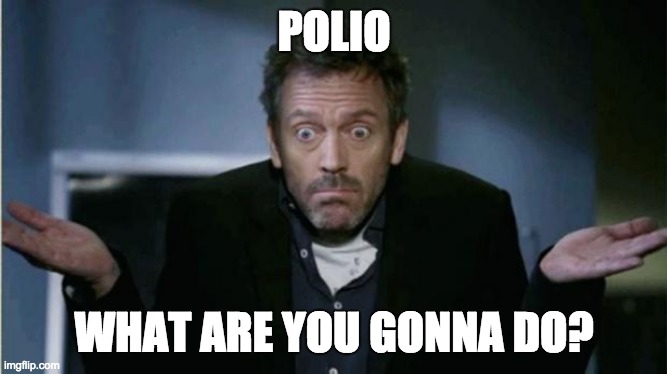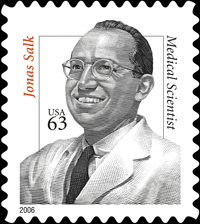If you’re facing an unknown situation and you don’t know how to trust someone, start by asking for proof. It’s a lesson for finance and a lesson for life.
Baseball…a Game of Trust?
Small-town high school baseball provides a perfect example of how to trust someone.
High school baseball players are inconsistent. That’s especially true near my hometown in rural upstate New York, where the season starts in snowy March and ends only eight weeks later. With this lack of playing time and practice, one inconsistent skill sticks out more than the others: the ability (or lack thereof) of pitchers to throw strikes.
Throwing a strike is much harder than it looks.
A pitcher stands 60 feet away from home plate and has to hurl the baseball—at speed—into an imaginary box (the “strike zone”) roughly 17″ by 30″.

They must do this successfully three times—i.e. three strikes and you’re out—before they fail four times—four failures (a.k.a. “balls”) gives the batter a free walk to first base.
While the pitcher is attemptiong to throw strikes, the batter is doing their best to smash the baseball as hard as they can.
At least, most batters are.
But I had a different method.
How to Trust a Pitcher
The pitchers I faced weren’t consistent. So I created a rule – a quick shortcut – for how to trust a pitcher: I didn’t swing until after the pitcher threw me the first strike.
It wasn’t a perfect strategy. Some pitchers would throw their first pitch right down the middle and I would miss a great opportunity to hit the ball. But that’s not catastrophic. I trusted myself to capitalize on one of my remaining two strikes.
But so many pitchers couldn’t throw consistent strikes. I would watch—or sometimes dodge—four consecutive balls and take my free walk to first base. And if you’re familiar with Michael Lewis’s Moneyball, you know how valuable free walks can be.
Even when the pitcher did throw a strike, my rule had upsides. It allowed me to see more pitches, to better gauge the pitcher’s speed, and ultimately to improve my chances of getting a hit.
How to trust a teenage pitcher? Ask him for proof: can you throw a strike?
But how does this apply to the real world?
How to Trust Experts? The Scientific Method
I have never seen a virus with my own eyes. Neither have you.
And yet I think the Coronavirus is a real thing. That’s right. Here I am on my haughty high horse, believing in something I’ve never seen. I’m also arrogant enough to suggest that vaccines can prevent viral infection. How can I be so pompous?

In short, we (as a society) asked the scientific community for proof. The scientific community responded with the scientific method, the ultimate “how to trust” system. Perhaps you recall the scientific method from high school? Or were you busy dodging baseball pitches?
In short, the scientific method uses empirical evidence (that which can be seen, smelled, felt—i.e. measured) to test a hypothesis or theory. If the evidence in an experiment is able to disprove a hypothesis, then that hypothesis is no longer considered valid. As more evidence is built up, certain hypotheses become accepted as fact.
If you’re interested, I recommend taking a few minutes to read about the original virus experiments.
Scientists knew by the early 1900s that viruses were real phenomena that caused real harm. And they also began to discover that they could grow vaccines against those viruses in fertilized chicken eggs (a process still used today).
“Would you like some polio?”
Polio is a viral disease that can result in muscle weakness, paralysis, and death. Of course, nobody knew that before the 20th century. They just thought that sometimes people got weak, suffered paralysis, then died.
In 1952—a particularly bad polio year—over 3,000 Americans died from polio and more than 20,000 were left with long-term disability. Most were children.
“What are you gonna do?! That’s just life!”

Turns out that science comes up with cool answers. Jonas Salk introduced a polio vaccine in 1955 and was hailed a miracle worker. His polio vaccine was put to use all over the world, and as all but eradicated the once-mysterious disease.
The vaccine has saved millions of lives. Possibly yours.
But You’ve Never Seen It!
But have you ever seen the poliovirus? Do you think it’s real? How do you know?
Of course, Dr. Salk knew how to trust his own work (i.e. the scientific method). But as outside observers, we have to educate ourselves on what happened before and after the vaccine, and then make our own logical conclusion.

Before Salk’s vaccine: history books say that many children died or spent their lives in iron lungs. You probably have living relatives that have first-hand stories of how polio affected family or friends. Just ask them.
After Salk’s vaccine: many children did not die nor end up incapacitated. Ipso facto, the vaccine has efficacy.
This pattern repeats itself all over the past century of medical history. Disease happens > scientific advancement > disease no longer happens.
“Sometimes kids just get diarrhea until they die of dehydration. Life’s a bitch sometimes!”
You know what else is a bitch? Cholera, the actual source of these horrible deaths. But modern sanitization technology has all but eradicated water-borne diseases (like cholera) from the modern world.
Smallpox, malaria, dysentery. Any other disease that you could pick up on the Oregon Trail computer game. They all have modern cures, solutions, vaccines, etc.
We aren’t that far removed from a time when this plethora of diseases killed people indiscriminately. But we now have mountains of evidence that prove how we’ve identified and addressed fatal diseases. If you want to know how to trust something, just look at what the scientific method has accomplished.
Or don’t. Your call. I just have one simple request:
Before you decide to not vaccinate your child because of the Area 51/Bill Gates/New World Order conspiracy, please Google an image of smallpox.
Isn’t This a Finance Blog?
Baseball and polio? Perhaps Jesse caught soapboxitis…
There are two important behaviors in personal finance that apply to today’s idea. The first is how to trust yourself, and the second is how to trust other people.
How to Trust Yourself? A Budget.
I spent the first few years of post-college life saying, “I know I’m good with my money. I know I don’t outspend my income.”
But how could I be sure? I wasn’t measuring my money. I could look at some bank statements, sure. That was some proof. But until I started a dedicated budget, I didn’t have regular confirmation of how to trust myself.
Now that I’m using YNAB, I’ve got all the verification I need. I budget every dollar I earn and track every dollar I spend. I’ve got past years of data for comparisons–here’s my breakdown for 2019.
P.S. – The YNAB link above gets you two free months of budgeting and gets me one free month. I’ve been using–and loving–YNAB for 4 years.

That trust provided by YNAB brings relief with it. It gives me confidence that I’m setting myself up for success. It’s one less thing to worry about—just like how I don’t have to worry about mumps or rubella.
How to Trust Others’ Financial Advice? Read.
The scary thing about personal finance is that the resource in question—money—happens to be something that everybody wants. Can you trust that guy giving you advice? Could he have ulterior motives e.g. getting closer to your money.
To ease my fears, I read. And one reason why I write is to ease I your fears, even if ever so slightly.
As I read and read and read (and listen too—I love podcasts), I gather a larger body of evidence. This is a parallel to how scientists like Jonas Salk run trials on their vaccines. If someone runs a new hypothesis by me—“silver is the new gold!“—I compare that hypothesis against my body of evidence. And when the hypothesis is dumb, I write an April Fools article about it.
Reading also builds trust with individuals. Some content creators reliably produce evidence-based content. Others specialize in hyperbole. I strive to be the former with the hope of building trust with you.
Should you trust me? I’m just one voice in the crowd. I’d encourage you to ask others for proof (e.g. a Google search or read a forum). Or check my other work and see if it meets your standards.
Ask the Future for Proof
When misinformation abounds, it’s challenging to build a system for vetting new information. It takes work. It requires vigilence. But asking for proof is a great start.
If people could see that change comes about as a result of millions of tiny acts that seem totally insignificant, well then, they wouldn’t hesitate to make those tiny acts.
Howard Zinn
Consider a tiny act in your life—strive to discover more truth. Think about where you get your information. A free walk to first base feels insignificant until it leads to the game-winning run.
Thanks for reading the Best Interest. Writing for you is a real grand slam.
Thank you for reading! If you enjoyed this article, join 8000+ subscribers who read my 2-minute weekly email, where I send you links to the smartest financial content I find online every week.
-Jesse
Want to learn more about The Best Interest’s back story? Read here.
Looking for a great personal finance book, podcast, or other recommendation? Check out my favorites.
Was this post worth sharing? Click the buttons below to share!
Pingback: How to trust someone? Ask for proof - The Global Centre for Risk and Innovation